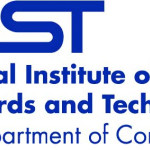- Industry: Technology
- Number of terms: 2742
- Number of blossaries: 0
- Company Profile:
The National Institute of Standards and Technology (NIST) — known between 1901 and 1988 as the National Bureau of Standards (NBS) — is a measurement standards laboratory and a non-regulatory agency of the United States Department of Commerce. The institute's official mission is to promote U.S. ...
A bucket sort where the function to determine the bucket is based on the range of possible keys.
Industry:Computer science
A child of a node in a tree, any of the children of the children, etc.
Industry:Computer science
A class of algorithms that are pseudo-random number generators. The next number is generated from the current one by r<sub>n+1</sub> = (A × r<sub>n</sub> + B) mod M, where A and M are relatively prime numbers.
Industry:Computer science
A class of algorithms to mark all reachable nodes in a directed graph by reversing pointers on the way down, then restoring them upon leaving. It uses only a few bits of extra space per node and a few work pointers.
Industry:Computer science
A class of collision resolution schemes in which all items are stored within the hash table. In case of collision, other positions are computed, giving a probe sequence, and checked until an empty position is found. Some ways of computing possible new positions are less efficient because of clustering. Typically items never move once put in place, but in Robin Hood hashing and other techniques, previously placed items may move.
Industry:Computer science
A class of collision resolution schemes in which linked lists handle collisions in a hash table. The two main subclasses are separate chaining, where lists are outside the table, and coalesced chaining, where the lists are within the table.
Industry:Computer science
A closed, bounded N-dimensional figure whose faces are hyperplanes. Informally, a multidimensional solid with flat sides. A generalization of polyhedron.
Industry:Computer science
A collection of items accessible one after another beginning at the head and ending at the tail.
Industry:Computer science
A collection of items in which only the earliest added item may be accessed. Basic operations are add (to the tail) or enqueue and delete (from the head) or dequeue. Delete returns the item removed. Also known as "first-in, first-out" or FIFO. Formal Definition: It is convenient to define delete or dequeue in terms of remove and a new operation, front. The operations new(), add(v, Q), front(Q), and remove(Q) may be defined with axiomatic semantics as follows. <ol> <li>new() returns a queue <li>front(add(v, new())) = v <li>remove(add(v, new())) = new() <li>front(add(v, add(w, Q))) = front(add(w, Q)) <li>remove(add(v, add(w, Q))) = add(v, remove(add(w, Q))) </ol> where Q is a queue and v and w are values.
Industry:Computer science
A collection of items in which only the most recently added item may be removed. The latest added item is at the top. Basic operations are push and pop. Often top and isEmpty are available, too. Also known as "last-in, first-out" or LIFO. Formal Definition: The operations new(), push(v, S), top(S), and popoff(S) may be defined with axiomatic semantics as follows. <ol> <li>new() returns a stack <li>popoff(push(v, S)) = S <li>top(push(v, S)) = v </ol> where S is a stack and v is a value. The pop operation is a combination of top, to return the top value, and popoff, to remove the top value.
Industry:Computer science
